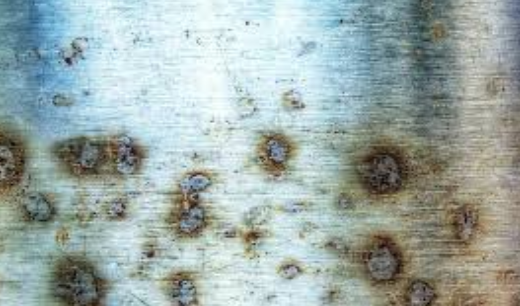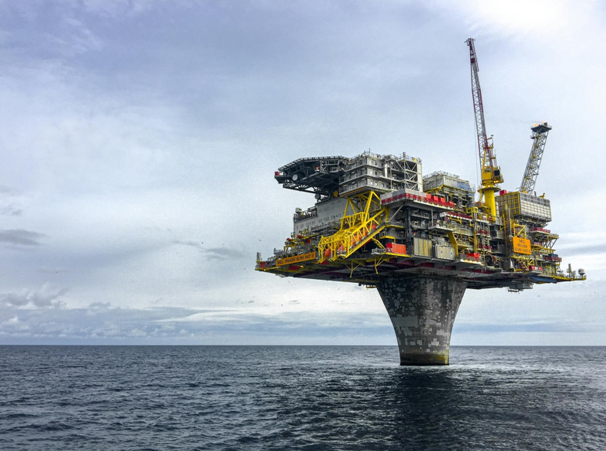Does aluminum stop rust
Rust is one of the most significant threats to metal components, especially those exposed to moisture, air, and harsh environments. Rust, in particular, can lead to structural damage, reduced lifespan, and increased maintenance costs. Preventing rust and corrosion is crucial for extending the lifespan of metals used in industries such as automotive, aerospace, and construction. Various surface treatments, such as painting, galvanizing, powder coating, and anodizing, are applied to protect metal surfaces.
Anodizing stands out as a highly effective surface treatment, especially for non-ferrous metals like aluminum, but its role in combating rust can sometimes be misunderstood. Rust specifically affects metals containing iron, leading many to wonder: Can anodizing stop rust on metals such as steel? Or is it limited to protecting metals like aluminum from corrosion? This article will help you understand factors causing metals to rust, the process of anodizing, and whether it can effectively stop rust formation on various metals.
What is Anodizing?
Anodizing is an electrochemical process that enhances metal surfaces by forming a thicker anodic oxide layer. This process improves the metal’s corrosion resistance, wear resistance, and visual appearance. Industries that require durable and aesthetically appealing metal parts, such as aerospace, automotive, and consumer electronics, frequently rely on anodizing.
The process starts by immersing the metal, usually aluminum, into an electrolyte bath, commonly containing sulfuric or chromic acid. When an electric current is applied, the metal serves as the anode, attracting oxygen ions to its surface. These ions react to create a thicker oxide layer, which provides superior protection against corrosion and wear. Although anodizing is most often applied to aluminum, it can also be used for other metals like titanium and magnesium, enhancing their surface properties.
The anodizing process
Anodizing begins with thorough cleaning and pretreatment of the metal to eliminate contaminants and ensure a consistent finish. Once clean, the metal is placed in the electrolyte bath, where the electrochemical reaction occurs. The characteristics of the resulting oxide layer—such as thickness, hardness, and color—are influenced by factors like the type of electrolyte, the current density, and the temperature of the bath. The oxide layer can also be dyed to produce a variety of colors, offering both functional and decorative options.
There are several anodizing processes, each tailored to specific application requirements. The most common types include chromic acid anodizing (Type I), sulfuric acid anodizing (Type II), and hardcoat anodizing (Type III). Type I creates the thinnest oxide layer (0.00002 to 0.0001 inches), providing excellent corrosion resistance without significantly altering the metal’s dimensions. This makes it ideal for precision components, especially in industries like aerospace, where maintaining exact tolerances is critical.
Type II anodizing is the most widely used due to its versatility and affordability. It produces a moderately thick oxide layer (0.0002 to 0.001 inches) that balances corrosion resistance with aesthetic appeal. Type III anodizing forms a much thicker and denser oxide layer (0.0005 to 0.002 inches), offering exceptional wear resistance and durability. Thus, manufacturers use it for components exposed to extreme conditions, such as those used in aerospace and military applications.
Key Factors Causing Parts to Rust
Rust occurs when iron or steel reacts with oxygen in the presence of moisture. As a result, iron oxide begins to form. While rust only affects iron and steel, several factors contribute to the corrosion process in metals in general. Understanding these factors helps in selecting appropriate surface treatments to protect metal components.
Rusting on machined metal parts
Presence of Iron or Steel
Rust primarily affects metals containing iron, such as pure iron or steel. The high iron content in these materials makes them susceptible to rust when exposed to air and moisture. Non-ferrous metals like aluminum, copper, and titanium do not rust because they lack iron but can still undergo other forms of corrosion. This is why aluminum, for example, corrodes but does not rust.
Exposure to Water or Moisture
Water is a key component in the rusting process. When exposed to moisture, either through direct contact with water or humidity in the air, steel or iron begins to oxidize. This reaction between iron and oxygen in the presence of water creates rust, a reddish-brown layer that weakens the metal over time. Even minimal exposure to water can initiate rust formation, especially in uncoated or untreated metals.
Salt and Harsh Environments
Salty environments, such as coastal areas or regions with heavy road salt use, significantly accelerate the rusting process. Saltwater is more conductive than freshwater, which speeds up the electrochemical reactions that lead to corrosion. For example, vehicles in coastal areas or ships exposed to seawater experience faster rusting compared to those in drier environments. Industrial environments with harsh chemicals or pollutants can also speed up rust formation due to the increased presence of corrosive substances.
Lack of Protective Coating
Iron and steel components left uncoated or unprotected are far more vulnerable to rust. Without a barrier to block moisture and oxygen, rust can form easily. Coatings such as paint, powder coating, galvanizing, and anodizing act as shields, preventing water and air from coming into contact with the metal surface. Applying a surface treatment can significantly reduce the risk of rust formation in applications where corrosion resistance is critical.
Mechanical Damage to Surface
Even if a metal has a protective coating, mechanical damage can expose the underlying metal to the elements. Scratches, dents, or abrasions can break through coatings, leaving the base material vulnerable to corrosion. Once the metal is exposed, moisture and oxygen can begin the rusting process at these weak points. This is why surface treatments must be applied and maintained carefully, especially for metals subject to regular wear or impact.
Does Anodizing Stop Rust?
When discussing whether anodizing can stop rust, it’s important to first differentiate between rust and corrosion. Rust is a form of corrosion that occurs in metals containing iron, such as steel. This process happens when iron reacts with oxygen in the presence of moisture, forming iron oxide, which we commonly refer to as rust. On the other hand, corrosion is a broader term that refers to the degradation of all metals, not just iron-based ones.
How Anodizing Protects Against Corrosion
Although anodizing isn’t a solution for stopping rust on iron or steel, it plays a critical role in preventing corrosion in metals like aluminum. The anodizing process creates a hard, durable, and corrosion-resistant aluminum oxide layer on the surface. This protective layer prevents moisture, chemicals, and other corrosive agents from penetrating the surface and reaching the underlying aluminum, which could otherwise degrade over time.
Anodized aluminum sheet is especially valued in industries where the metal is exposed to harsh environments, such as marine applications, where saltwater is a major cause of corrosion. By preventing pitting and oxidation, anodizing ensures that aluminum parts remain strong and durable even after prolonged exposure to corrosive conditions. Furthermore, anodizing can improve the appearance of aluminum by providing a consistent, attractive finish that can be dyed in different colors.
Anodizing and Rust on Aluminum
Aluminum, a non-ferrous metal, doesn’t rust in the same way as iron or steel. Instead of rusting, aluminum forms a natural oxide layer when exposed to air. This thin oxide layer helps protect the aluminum from further corrosion, but it’s relatively weak and can deteriorate over time, especially in harsh environments like coastal or industrial areas. This is where anodizing comes in.
Anodizing aluminum enhances this natural oxide layer, making it thicker, more uniform, and more resistant to corrosion. This process significantly increases aluminum’s durability, particularly in environments exposed to moisture, salt, and chemicals. It prevents aluminum from corroding, offering excellent protection that extends its lifespan.
Can Anodizing Stop Rust on Steel?
Anodizing is generally not applied to steel or iron, and this is where the answer to whether anodizing stops rust becomes clearer. Anodizing works primarily with non-ferrous metals like aluminum, titanium, and magnesium, which do not rust because they do not contain iron. Since steel and iron are highly prone to rust, anodizing is not suitable for them.
Alternative treatments like galvanizing or powder coating are typically used for rust-prone metals like steel. Galvanizing involves applying a protective zinc layer over the steel, which acts as a barrier to prevent moisture and oxygen from reaching the iron content in the steel, thus preventing rust formation. Powder coating and painting can also be effective in protecting steel from rust, but these treatments can chip or wear away over time, requiring regular maintenance.
Conclusion
Anodizing is an effective surface treatment for preventing corrosion in metals like aluminum, titanium, and magnesium. While anodized aluminum will not rust, it will still benefit from enhanced corrosion resistance. Thus, it is suitable for several applications where exposure to moisture or chemicals might be a concern.
Other protective methods, such as galvanizing or powder coating, should be considered for metals like steel or iron that are susceptible to rust. The techniques create a physical barrier that prevents moisture and oxygen from reaching the iron content in the metal, thus preventing rust. Ensure you choose the best manufacturing partner for aluminum anodizing near me. They will help you decide the best process for your project.


